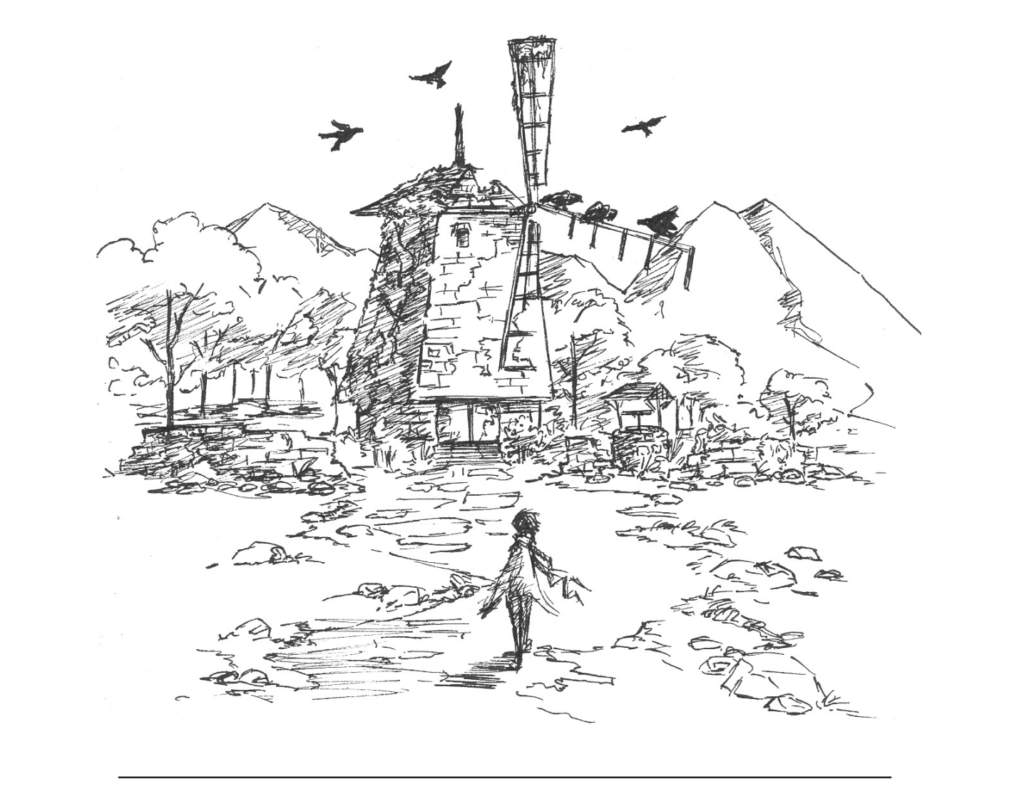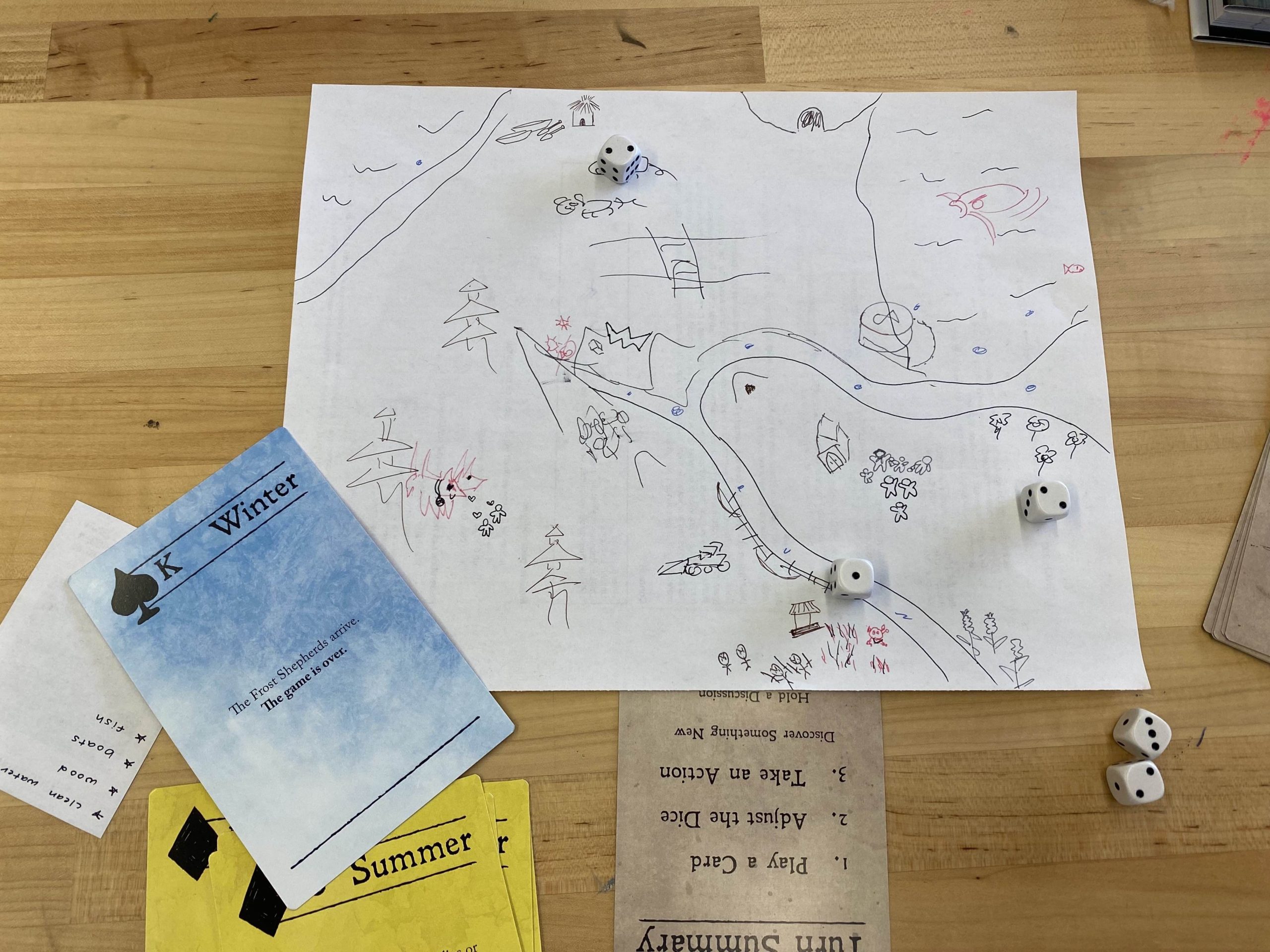
Aside from a brief stint in D&D, I have relatively little experience playing TTRPGs. I was caught off guard by the design of A Quiet Year–a DM-less TTRPG where players collectively act as a community rebuilding after the collapse of civilization. Rather than players assuming individual characters, gameplay centers around a communal map-making process where player visualize their world-building and create a visual record of the land and its people. Prior to this experience, I had little exposure to TTRPGs where specific, named characters were not at the center of gameplay. Rather than leaning into character specificity, the A Quiet Year’s rulebook and the deck of cards players drew from to facilitate their turns appeared to be invested in thematic and affective specificity. In this case, what I mean by thematic specificity is not the game’s post-apocalyptic setting, but the thematic kind of narrative arc the game sets players up to experience.
A Quiet Year provides players with this thematic arc via “The Opening Story” which is meant to be read aloud at the start of the game. The section of this passage that particularly struck me while playing was, “Come Winter, the Frost Shepherds will arrive and we might not survive the encounter…But we don’t know about that yet. What we know is right now, in this moment, there is an opportunity to build something.” The language of this passage primes the player to have an affective experience of feeling at the end of the story they are about to create before it even begins. A Quiet Year sets itself up as a game that settles into “ending” and lets players decide whether that conclusion is something to rise up towards or wind down to. This thematic investment in the ending is complicated by the phrasing, “But we don’t know about that yet,” which suggests that players are meant to deny or defer their knowledge of the ending when deciding the direction and actions the community takes. Additionally, the repeated use of “we” in this opening section creates a separation between the community of individuals and the players who act as the social forces within the community. Diegetically, the community cannot know the ending, but the social forces must.
As someone with less experience with TTRPGs, I found the dissonance between the diegetic community’s knowledge and my non-diegetic understanding of where the story was heading difficult to manage. While the game tried to orient us to develop struggles linked with this larger conclusion, often I felt like the problems we introduced felt disappointingly tinged with the sensation of only being important in the meantime. As if all of the complications we were introducing were meant to merely fill the time before the Frost Shepards arrived. How the game asked us to approach this ending framework left me feeling uncertain about how to make the projects we chose to develop and the events we chose to occur feel continuous and consequential to the arrival of the Frost Shepards. I did not want to imbue the community’s actions and motives with knowledge they were not supposed to possess, but it became difficult to make the cacophony of micro-narrative threads that needed to be updated or resolved feel cohesive when the end of the game suddenly arrived. In retrospect, I think have a better grasp on how to utilize the affordances of the design of the game which make this ending, and the actions players are prompted to take, general enough to allow for high levels of narrative customization and replayability. Nevertheless, I feel like during my first experience of A Quiet Year, it was difficult to take advantage of such a vast and unstructured possibility space, and as a result, the intended affects felt diluted, and at times, even muddled.
Despite this, I found the DM-less nature of the game and the card prompt mechanic novel and exciting, and certainly compelling enough to borrow for my team’s own TTRPG. The visual of seeing the deck decrease as the game progressed, coupled with the active sensation of draining away the time left by drawing cards, created a strong atmospheric tension as Winter approached. While the map-making aspect of this game reinforced sensations of development and progress, the deck was a powerful throughline in making the ending of the game feel omnipresent and approaching.
